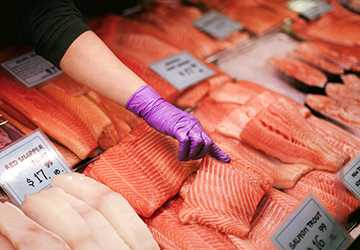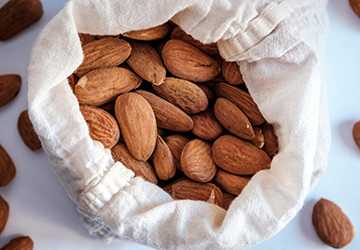If you or a loved one lives with diabetes, you’re likely all too familiar with the importance of paying close attention to your diet. When you have diabetes, your body loses the ability to regulate blood sugar levels on its own properly.
This is why following a diabetic-friendly meal plan is crucial – it helps stabilize blood glucose to keep you both nourished and free of highs and lows.
We know it can be overwhelming to translate complex nutrition advice into easy, everyday food choices. That’s precisely why we created this post – to simplify things.
In the next few minutes, you’ll discover the four most critical elements of diabetes-conscious eating straight from dietitians.
Arm yourself with this knowledge and use our practical examples to build satisfying, blood sugar-friendly meals. Regaining control of your health starts now!

4 Crucial Elements for Diabetic Wellness
Now let’s explore the four nutritional pillars vital for balancing blood sugar and managing diabetes:
1.Lean, High-Quality Protein
Protein takes centre stage in diabetes meal planning. It doesn’t significantly impact blood sugar, making it a free food group. Plus, it stabilizes glucose levels to keep you feeling energized and full for longer.
Here are some stellar, lean protein sources to eat several times per day:
● Salmon, tuna, tilapia and other fatty fish
● Chicken and turkey breast
● Eggs and 100% egg whites
● Plain, nonfat Greek yoghurt
● Tofu and tempeh
● Beans, lentils and peas
● Unflavored nuts and seeds
See how these options emphasize plant-based and seafood proteins. They also provide optimal nutrition for the heart and waistline.
2.Non-Starchy Vegetables
Non-starchy veggies are another diabetes superfood because they’re deficient in carbs and calories. Enjoy these liberally – they’re unlimited!
Fill half your plate or more with fantastic picks like:
● All leafy greens – spinach, kale, lettuce
● Crucifers – broccoli, Brussels sprouts, cabbage
● Asparagus, green beans, snap peas, okra
● Mushrooms, onions, tomatoes, eggplant
● Peppers, carrots, turnips, radishes
● Summer squash and zucchini
Notice the rainbow of colours and variety? That’s key for a significant infusion of protective compounds and no nutritional gaps.
3.Whole Grains and Starchy Veggies
Now, we come to the carb components. As a person with diabetes, keeping close watch over your daily carb input is non-negotiable for staying in your optimal blood glucose range.
Fibre-rich whole grains and starchy vegetables aid blood sugar management when enjoyed in controlled portions due to their steady, slow-burning nature.
Here are some excellent choices, along with suggested serving sizes:
● 1⁄2 -1 cup cooked grains like oats, farro, brown rice, quinoa
● two slices 100% whole grain bread
● one small baked sweet or white potato
● 1⁄2 cup cooked beans, lentils, peas, corn, winter squash
Always pair carb-containing foods with protein like eggs, nuts or fish to further balance absorption.

4.Heart-Healthy Unsaturated Fats
It’s time to end the outdated myth that all fat is terrible, especially for people with diabetes. Healthy fats are vital for stabilizing blood sugar. They also curb appetite, calm inflammation, and benefit cardiovascular wellness.
Focus on unsaturated plant-based fats like:
● Olive, avocado and nut oils
● Nuts, seeds and their butter
● Olives and avocados
● Nonfat plain Greek yoghurt
You can use these to prepare meals, make dressings and snacks, or add flavour and creaminess to dishes instead of less healthy saturated fats.
Conclusion
Incorporating lean protein, non-starchy vegetables, whole grains and healthy fats into your meals while limiting empty carbs and added sugars sets the stage for achieving better blood sugar control and reducing diabetes complications.
Use the plate method as your blueprint for nutritious, balanced eating. Focus on diet quality and your unique carb tolerance to determine optimal portion sizes. Here’s to healthy eating on your diabetes journey!
FAQs
Q. What are the best fruits to eat on a diabetic diet?
Ans. Opt for fruits with lower glycemic indexes, such as berries, stone fruits, apples, pears, and citrus fruits. Be mindful of portions of higher-glycemic fruits, such as bananas, grapes, cherries, and mango, since they raise blood sugar more.
Q. Do people with diabetes need to eat special diabetic meals?
Ans. There’s no need for exceptional “diabetic food.” Focus on a balanced diet emphasizing vegetables, lean protein, whole grains and healthy fats. Pay attention to carb quantities in line with your custom treatment plan.
Q. What sweeteners are best for people with diabetes?
Ans. Artificial sweeteners like stevia and monk fruit or small portions of raw honey, maple syrup, and coconut sugar are less likely to spike blood sugar than table sugar. Moderation is still vital.





